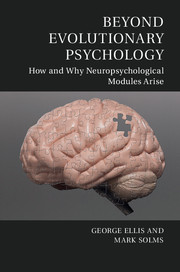Book contents
- Beyond Evolutionary Psychology
- Culture and Psychology
- Beyond Evolutionary Psychology
- Copyright page
- Contents
- Figures
- Plates
- Preface
- Acknowledgements
- 1 Introduction
- 2 The Mind and the Brain
- 3 Hierarchy, Modularity, and Development
- 4 Claims of Innate Modularity
- 5 The Mind and Emotions
- 6 A Realistic View of Evolution, Development, and Emotions
- 7 Conclusion
- Appendix: Language Infinities
- References
- Index
- References
References
Published online by Cambridge University Press: 14 December 2017
- Beyond Evolutionary Psychology
- Culture and Psychology
- Beyond Evolutionary Psychology
- Copyright page
- Contents
- Figures
- Plates
- Preface
- Acknowledgements
- 1 Introduction
- 2 The Mind and the Brain
- 3 Hierarchy, Modularity, and Development
- 4 Claims of Innate Modularity
- 5 The Mind and Emotions
- 6 A Realistic View of Evolution, Development, and Emotions
- 7 Conclusion
- Appendix: Language Infinities
- References
- Index
- References
- Type
- Chapter
- Information
- Beyond Evolutionary PsychologyHow and Why Neuropsychological Modules Arise, pp. 178 - 194Publisher: Cambridge University PressPrint publication year: 2017



